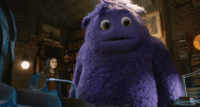Real people and real stories are what inspire the stories filmmaker Hamoody Jaafar seeks to tell. River Rouge, Michigan, is where his new documentary Rouge is set. To Jaafar, River Rouge is a place like no other in America, but it’s also a place where a familiar dream is dream takes root: the hoop dreams of young men seeking a state title.
In Rouge, seven decades after their high school’s incredible heyday—a period when a legendary coach led an integrated team to a record 12 championships against segregated schools—a River Rouge High School squad is led by a former player as coach. He and his charges hope to chase down a state title that has eluded River Rouge for nearly three decades now. The story Jaafar tells in Rouge is one of a rich historical legacy and a passionate quest for excellence in a time of social turbulence.
Hamoody Jaafar is a Detroit-based director and producer whose prior films include Detroit Diamond, (Cleveland International Film Festival, 2018) and Enter the Cavaliers (Cleveland International Film Festival, 2020). Jaafar spoke recently with Film Obsessive Publisher J Paul Johnson about his own upbringing in Michigan, the story told in Rouge, and the film’s current festival run. The transcript following the video has been edited for space and clarity.
Film Obsessive: Can we begin with a wide shot, if you will, of where this film is set and the area of River Rouge?
Hamoody Jaafar: So River Rouge is just south of the city of Detroit. It actually borders the City of Detroit. It’s the first city that opens into what’s called the Downriver area of Southeast Michigan, which is these communities that are aligned along the Detroit River. And it’s a lot of lower to middle class industrial towns where most citizens worked in steel factories or the auto manufacturing industry here in Detroit. So that’s where River Rouge is. It’s just south of the city of Detroit.
And that’s an area where you grew up as well.
Yeah. So I grew up in the Downriver area. I grew up like probably four or five miles from River Rouge. And you know I grew up in the ’90s. My dad’s a Lebanese immigrant. He worked at Ford Motor Company, and he settled in this Downriver community. And that’s where I was born and raised. And when I was growing up in the ’90s, basketball was really like a gateway for me as a young person. It taught me a lot of different cultural and societal traits, I would say, as I was developing, and it helped me gain a lot of basic fundamental things in my day to day life, like friendships, learning how to compete, and discipline.
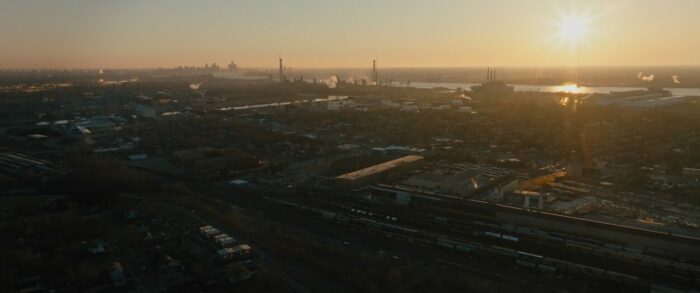
And so when I was growing up, River Rouge High School, in the mid to late ’90s was the best high school basketball program around. And if you grew up in this area, if you’re a basketball fan or a basketball head, obviously, if you’re from the Detroit area, the Detroit Pistons and the Bad Boys of the late ’80s, of course, had a huge cultural impact on us in this area. The Fab Five at the University of Michigan was also an extension of that.
And then for me as a young person, it was River Rouge High School. It was the River Rouge Panthers. And they were to me, an extension of, University of Michigan’s Fab five. They were the first high school to get a sneaker deal. They were sponsored by Adidas, you know, they were on television twice a week. They had a beat writer that covered only them—whose only job was to cover River Rouge High School basketball. And Brent Darby Senior, who was their best player, was somebody I really looked up to as a kid.
And that’s how the story came about and the documentary came about.
And did you know when you were young of that program’s extraordinary legacy (starting in the 1950s) under Coach Lofton Greene, or was that something you came to a little later on as you were doing your research?
I didn’t know. I was familiar with the Brent Darby years and the LaMonta Stone years of the mid-to-late ’90s. I was an inspiring filmmaker, and in fall, winter of 2019, I had gone out to film a high school basketball prospect by the name of Emoni Bates, who is now in the NBA playing for the Cleveland Cavaliers. And he was coming off the cover of Sports Illustrated, and he was headlining the high school basketball tipoff of the 2019-2020 season. And it was centered around him. And I had gone out to film him. And then in that night, when I had gone out to film him, I was denied access to his locker room. And his opponent was River Rouge. So by default, I ended up in the River Rouge locker room.
And in that moment, I thought that was sort of serendipitous because I, you know, started to think about my childhood and wasn’t really familiar with where River Rouge was now, like what they were doing now, and was a little ignorant to it. I had known that Brent Darby Senior had tragically passed away in 2011, and that was sort of the end of it for me. But in that night, the night that I’m telling you about, when I was in the locker room, I realized that Brent had a son by the name of Brent Darby Junior and that he was there playing for his dad’s alma mater, and that his dad’s coach Coach Stone was also back in River Rouge coaching Brent’s son.
So that was a father-son legacy story that I couldn’t have scripted. And then they had gone out and won that night and beat Emoni Bates’ team. So then I was really, you know, really immersed and entranced in at all. And then I fell down the rabbit hole of research of the Lofton Greene years for the next seven, eight days and just couldn’t believe it. I couldn’t believe. I didn’t know that we didn’t know. In Southeast Michigan, we had forgotten, you know. So to me, it was like a perfect opportunity to tell a historical story, but then also leverage what was happening in the present to elevate the stakes of the present through the past.
Starting in the 1950s Coach Lofton Greene led an interracial team to high school state championships. What was it? 12 times? Like maybe eight titles in the 50s and a few more in the 60s and even a couple early in the 1970s, is that correct?
Yeah, the main stat we use is 1954-1972. They appeared in 14 out of 18 state championship games, and they won 12. From 1961-72, they won nine of 12 appearing in 11, I believe. So it was almost like it was this stat of, like, 90% of the time, you know, 80 to 90% of the time this team was competing for the state championship, which was just completely unheard of. I mean, to give you context, River Rouge has 30 regional championships; the high school I went to has zero. So it was just an accomplishment on the hardware that I had never heard of. The only thing I could compare it to was the Boston Celtics of the 1950s-1960s or, you know, the UCLA Bruins of the 60s-70s. And so that’s why we make that reference in the film was because that was the only other comparison we had to what they had accomplished.
And his was a pretty remarkable story. As a documentarian, then you’ve got two real challenges in front of you, and I’d like to get your thoughts on both. One is researching the past, trying to find some footage of a sport that was only very rarely televised and trying to bring to life that era. And then after that, your filming in the (near-) present as well.
So the unique thing about River Rouge in general is just how interconnected the community is through the basketball program. And that’s there’s a line in the film where Paul Greene, who’s the late Lofton Greene’s son, says, and I’m kind of paraphrasing here, something along the lines of if it didn’t matter if you were a graduate of the ’50s or if you went to school with LaMonta in the ’80s or if you’re here now, like, everybody knows each other. And so when we sort of introduced the idea of telling the story as a documentary, the alumni were very supportive.
And we did a bunch of research, we went into the high school’s attic and found some old 16-millimeter film that had been stored away that we developed. And Paul Greene had this incredible album that had all the incredible photos and this timeline of all the state championships and events, so we digitized all that. And then once we realized what we had from an asset perspective that we could help visually tell the story, you know, then we just really worked on leaning into identifying the alumni and you know, making creative decisions. They had this gymnasium that had been shut down for 20-plus years where they won all these state championships in, and nobody had been in the building in decades. So we wanted to capture the raw emotion of those reactions [with the players re-entering the old gymnasium].
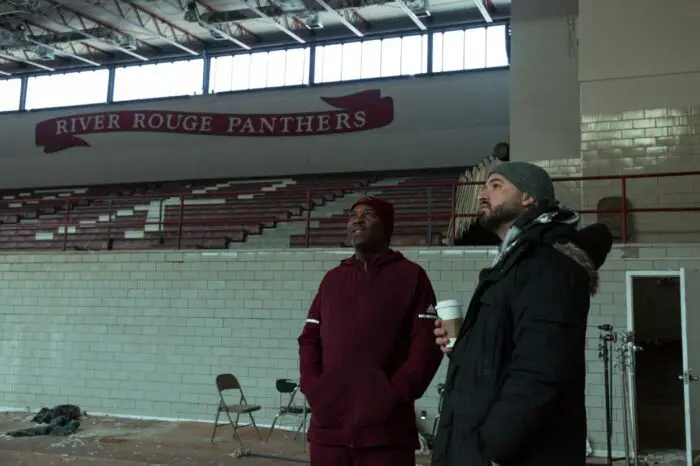
And then [current River Rouge coach] LaMonta Stone, having played his senior season for Coach Greene, it was just a perfect way to connect all the dots, because he had become the coach in the ’90s and sort of restored the glory, if you will. And he had gone on to coach in college for 15-plus years. So him coming back [to coach River Rouge High School] was just too special to not want to document. It was like this former student athlete who who became the coach and now is back coaching really connected it all for us. So that was why we made the decision of tying the past to the present because as we documented the season, we felt like as audiences really learned about the history, that they would they would only root more for what was unfolding in the present.
Right. And I think Coach Greene is a story that deserves to be told even absent the context of your making a documentary about the near-present team engaging in their state title run. How are the challenges that the present team is facing, different from those of Coach Greene’s heyday? In some superficial ways, their game has changed: there’s more play above the rim than there was 30 or 40 or 50 or 60 years ago. But how do you see those players’ lives as being different today than they were back then?
Well, it’s such a great question because like you said, the game of basketball changed and evolved, through the ’80s into the ’90s and we tease at that in the film when we go into the Stone years and how he sort of sort of changed the face of the program from a style of play perspective while still maintaining some of the old school values of hard work, discipline, work ethic, what have you. But there’s so many layers of this story that aren’t even in the film. You know, the school district was ordered to be shut down in the late in 2009 or 2008, right around that time, the State of Michigan ordered the schools doors to be shut down because the student enrollment had gone down so low that the state of Michigan ordered the school district to be shut down.
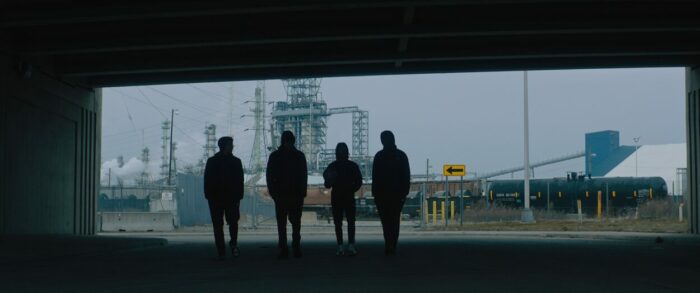
And a lot of neighboring communities and high schools, particularly communities of color in Detroit and the greater Detroit area, started to have their schools shut down for the same sort of socioeconomic reasons, and River Rouge had to reinvent itself even to stay open. They had to reinvent their bus system and became an open enrollment school. So, you know, although all the students in the present aren’t from River Rouge directly, it’s still this basketball program and legacy that’s kept the school alive. And what the school does now is it buses in kids from neighboring communities like Amani Weston, whose community high school was shut down in Inkster. So he buses 45 minutes every morning just to be a part of the school, just to have a place to be educated.
And so the new version of River Rouge is an example of resilience in the real-time present-day story because of them overcoming those socioeconomic conditions, those environmental conditions, and still thriving. So it’s become more of a—I don’t want to use the term lifesaver—but I mean, it’s a gateway. You know, it’s a gateway for survival. It’s a stepping stone in life. It’s become a safe haven for a lot of young people. And that’s kind of the new identity of it all. And now the student enrollment is above where it needs to be. Now they don’t need to expand the school because the enrollment is so high. So they’ve become an example, I think, at a deeper level.
That’s awesome to hear. I’m also curious about the challenges that you face trying to document that because it’s like a broad sociological topic, really, but it’s enacted through the game of basketball and not just in the games, but in the practices in the day to day interactions with coaches and teachers. Could you just talk a little bit about how you are doing that as a filmmaker? Like, what decisions you’re making, what kind of gear you’re bringing, what kind of people you’re bringing along, where you’re going and what you’re choosing to really focus your lens on?
Being from the area, being a child of immigrants, coming from nothing, I’ve always had to sort of will things into existence myself. And I just I was able to really relate to everything that was going on there. And I think ultimately that trust was earned, and Coach Stone and I developed a really close bond and relationship, you know, between myself and the student athletes and their families. And once I realized how good that trust was and how strong it was, being a local person, trying to tell a local story, I think that goes a long way. I realized the access was going to be super intimate and I was able to earn that, that’s when I really made a decision: I don’t want to shoot this as just a regular documentary. Rouge feels more like it’s a movie that’s unfolding. So it deserves this cinematic lens. I wanted it to look and feel like it was a scripted, Hollywood blockbuster that was unfolding, you know, from a visual lens. And I I felt like they deserved that. And so, creatively, we made those decisions.
In Detroit, there is a filmmaking community, and it’s really driven by the commercial space, like television commercials for like the auto industry, like for General Motors, Chrysler. But the ad agencies here help provide a lot of the local filmmakers work, not necessarily myself, but just some of my collaborators. And because of that, there’s access to certain levels of equipment and gear, and the cinematographers on the film, Tommy Daguanno and Richie Trimble, were both really in love with the story, were open and willing to work on a deferral. And they were willing to bring an AR Alexa Mini—two of them—to the production team, and we got some anamorphic lenses, and we really wanted it to feel larger than life.
And we wanted to capture it from a place of intimacy. Maybe those gear choices or equipment choices from a documentary perspective aren’t usually traditionally used because these rigs can look and feel sort of intimidating and they’re very visual. But once we built that trust and camaraderie and we immersed ourselves, it was like they weren’t even there anymore, you know? And it allowed us to capture something really unique, both from a creative technical perspective and then also just from a human perspective.
It takes a lot of work, and it takes a little bit of gear to make something look invisible, right? Which is ultimately the goal that you’re looking for, like you are just a person in the crowd or another member of the team on the bench watching the action unfold or as if you’re almost in the midst of it during the games themselves. And they’re exciting. But they don’t look like broadcast television. There’s no big wide shots. There’s no on-screen graphics really, except for just brief indications of this score. It’s very much more of a verité approach where you’re seeing the event as it’s unfolding.
Yeah, and I wanted audiences to feel like they could get an experience of what it was like to be a Rouge Panther themselves. And the reason why we didn’t do these big wide shots and, you know, letting the action sort of unfold, like you would see on a broadcast television basketball game was, that basketball is such a beautiful game when it’s played the right way and executed the right way. And there are a lot of these subplot elements that we were teasing: four to five passes, you know, River Rouge basketball historically was never about one guy. It was always about five guys. So we wanted to shoot in slow motion to let some of those moments unfold more—I don’t know—beautifully is the right word.
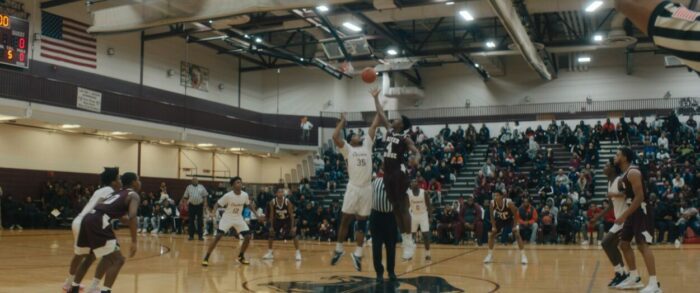
We always compared it to when basketball is executed the right way, it can feel like the ballet, where everything is just in sync and there’s harmony. So those are some of the creative choices we made from a filmmaking perspective because we just don’t usually see basketball shot that way. We wanted to go against the grain and capture it in that manner. And at the end of the day, it’s a human interest story. These stakeholders and these characters are driving the story. The basketball side of it is very complementary in a sense, but it wasn’t about every detail, it was about the nuances of the game itself that were unfolding. We captured 20-plus games, and you probably only see a handful in there. That was intentional, because it was about the people, and the basketball side of it was supposed to be complementary, but then also in a manner that’s untraditional to just get you to think a little differently about what you’re seeing and feeling.
What’s next on the docket for Rouge? It’s been at Cleveland Film Festival. It’s been at Hot Docs, Michigan as well.
We had our Michigan premiere at the Freep Film Festival. And then we had our world premiere at the Cleveland International Film Festival. We won the local Heroes Award there for that. And then we had our international premiere at Hot Docs in Toronto. We were just invited to Windsor International Film Festival in September. We’re getting a few invitations now and we’re trying to figure out which ones we should screen. And we’re hoping to, you know, get on the radar of streamers and whether it’s an agency or whatever it needs to be.
It’s an exciting time, but it’s also a time of unknowns, when you have that first film and you’re looking to move it past those first few festivals into a wider release, maybe into streaming. Rouge is such a good film. I’m confident it’s going to find its way out into the world. It’s a film that takes place largely on a basketball court, but is really about so much more than basketball. Thank you, Hamoody, for taking the time to speak with us at Film Obsessive today. I appreciate the conversation.
That was my pleasure. Thanks so much for having me. I really appreciate it.


